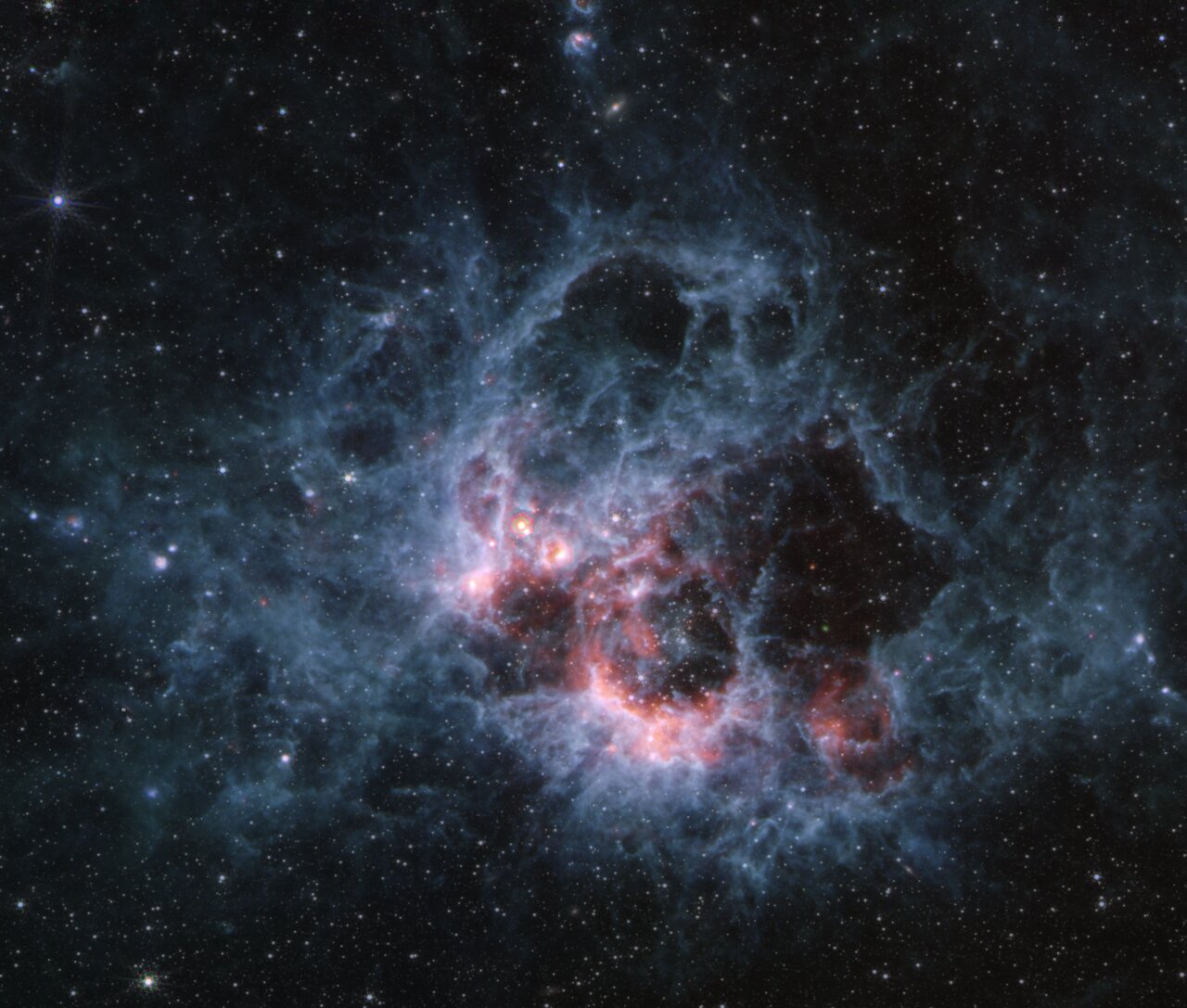The James Webb Space Telescope hones in on star-forming region in the Triangulum Galaxy (images)
Two spectacular new images from the James Webb Space Telescope (JWST) reveal the stunning and intricate details of a star-birthing region in the Triangulum Galaxy.
The James Webb Space Telescope imaged the star-forming region NGC 604, located some 2.7 million light years from Earth, using its Near-Infrared Camera (NIRCam), and its Mid-Infrared Instrument (MIRI). The Triangulum Galaxy, within which NGC 604 sits, is also known as Messier 33 (M33).
The gas clouds that fill this star-birthing region are estimated to be around 1,300 light-years across. NGC 604 is estimated to be relatively young at just 3.5 million years old; it's a mere infant in comparison to our 4.6 billion-year-old solar system.
Related: Oldest 'dead' galaxy ever seen defies current models of the ancient universe
The JWST images show tendrils and envelopes of gas that enshroud over 200 stars in the very early stages of their lives. These B- and O-type stars, some of which have masses around 100 times that of the sun, are rare to find in concentrations like this in the nearby universe.
These infant stars emit intense radiation, especially over ultraviolet wavelengths, and blow out powerful stellar winds that carve out cavities in the NGC 604's gas content. In the MIRI and NIRCam images, these cavernous voids can be seen as huge, dark "bubbles" surrounded by wispy tendrils.
In the NIRCam image, tendrils of gas are prominently seen as bright red threads extending from those voids. A ghostly blue and white glow around these tendrils is the result of ultraviolet light ionizing hydrogen gas. Bright orange streaks in this NIRCam image indicate the presence of carbon-based molecules called "polycyclic aromatic hydrocarbons" (PAHs). This is significant because PAHs play an important role in forming both stars and planets, and are considered important building blocks for life here on Earth. However, where PAHs originate remains a mystery.
Breaking space news, the latest updates on rocket launches, skywatching events and more!
Further from the dark voids are deeper red clouds which signify the presence of un-ionized molecular hydrogen. It is in this cooler gas where stars are more likely to form. Spotted throughout the NIRCam image are bright blue stars in the process of creating voids of their own.
The MIRI image is also replete with details that show the dynamics of NGC 604, though this version lacks many of the bright blue stars visible in the NIRCam image. This is because stars emit less light in the mid-infrared wavelengths MIRI is designed to see.
What MIRI's view of NGC 604 lacks in young stars, however, it makes up for in the glow of red supergiant stars, which are stars that have exhausted their hydrogen supplies necessary for intrinsic nuclear fusion. These stars have thus "puffed out" and cooled. Some are 100s of times the width of the sun.
Also fainter in the MIRI image of NGC 604 are galaxies that lie behind the stellar nursery.
What is more prominent in the blue tendrils of gas that populate this second JWST image, s the contribution PAHs make to the pre-natal clouds of gas and dust in the M33 star-birthing region.

Robert Lea is a science journalist in the U.K. whose articles have been published in Physics World, New Scientist, Astronomy Magazine, All About Space, Newsweek and ZME Science. He also writes about science communication for Elsevier and the European Journal of Physics. Rob holds a bachelor of science degree in physics and astronomy from the U.K.’s Open University. Follow him on Twitter @sciencef1rst.


